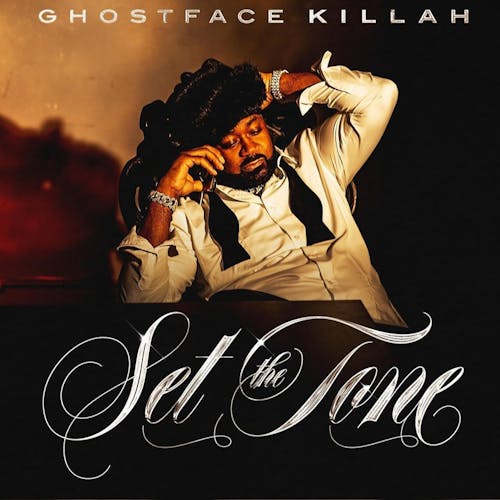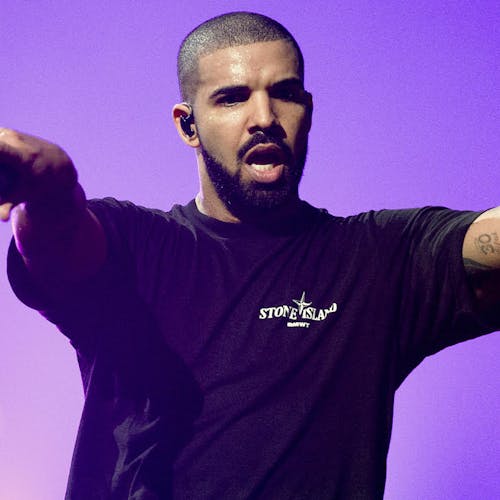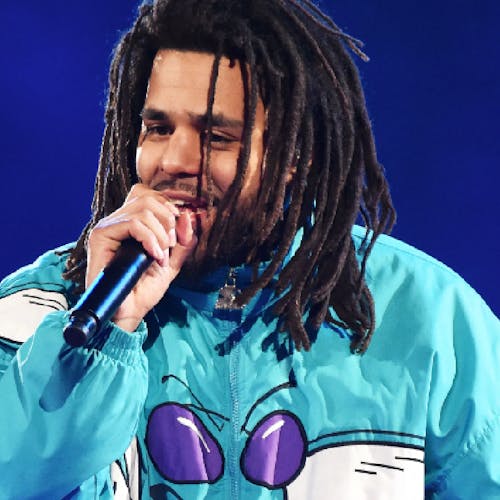
2000s Hip-Hop fashion was a defining cultural movement of the decade, characterized by bold, expressive, and creative styles that reflected the energy, attitude, and creativity of Hip-Hop music.
The Most Iconic 2000s Hip-Hop Fashion Pieces
This period of fashion was marked by a diverse range of trends, styles, and influences, from streetwear to high-end luxury fashion. It was a time when Hip-Hop fashion was not only a reflection of the music but also a statement of self-expression, individuality, and cultural pride.
But what elements remain in the memories of many more than 20 years later?
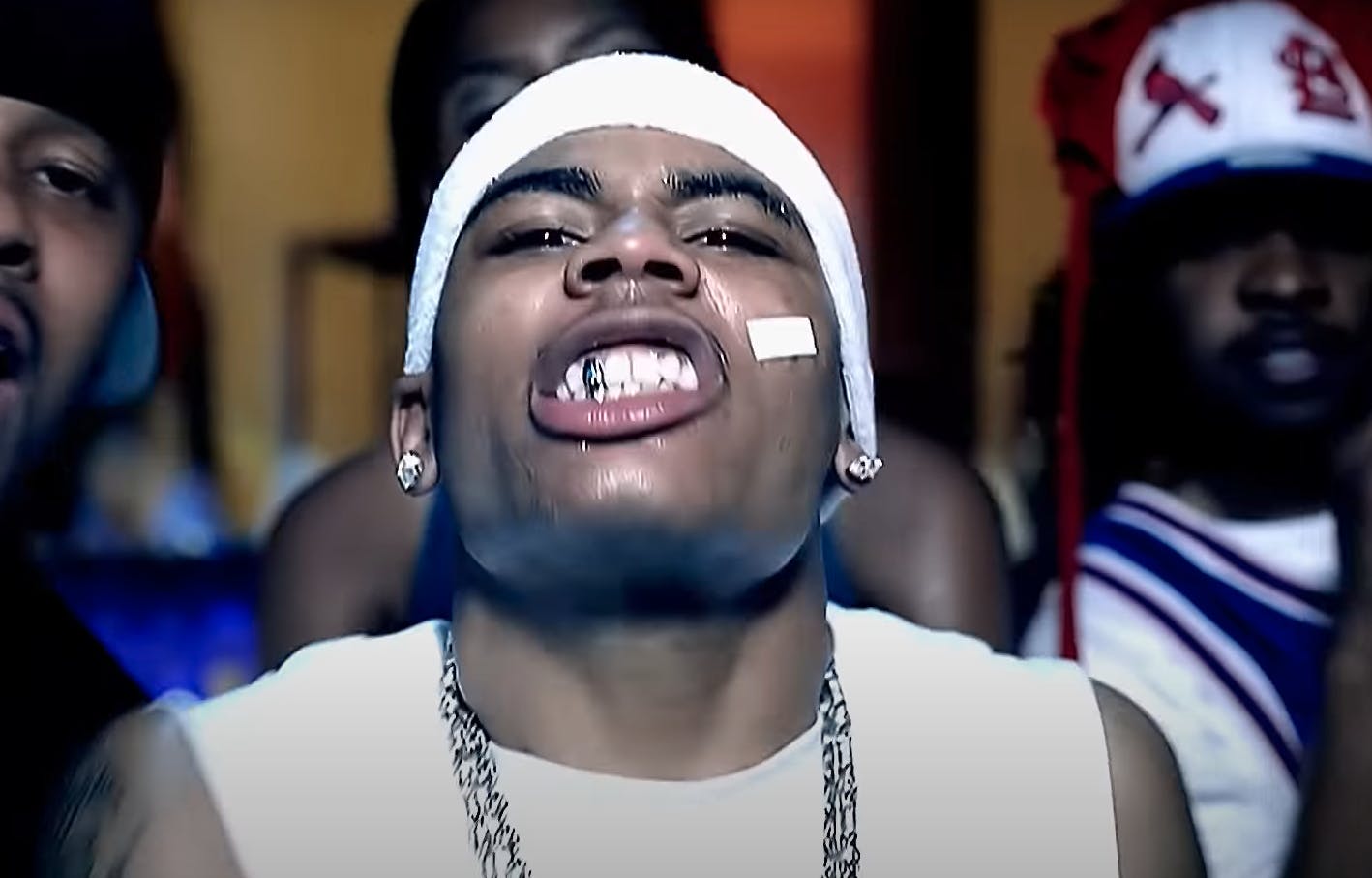

Nelly’s Band-Aid
Nelly’s music video for “Hot in Herre” was one of the steamiest videos of the era. The only thing that didn’t quite fit the sexy motif was the white bandage on his cheek. But, of course, there’s a story behind the accessory he wore for nine years.
Nelly has admitted that he originally started wearing the Band-Aid on his cheek after a basketball injury but kept wearing it after the scar healed in honor of St. Lunatic Lavell Webb, who collaborated with him on "Ride Wit Me" and was serving a 10-year prison sentence. When Spud was released after nine years of his ten-year sentence, Nelly's bandage came off.
DROP YOUR EMAIL
TO STAY IN THE KNOW
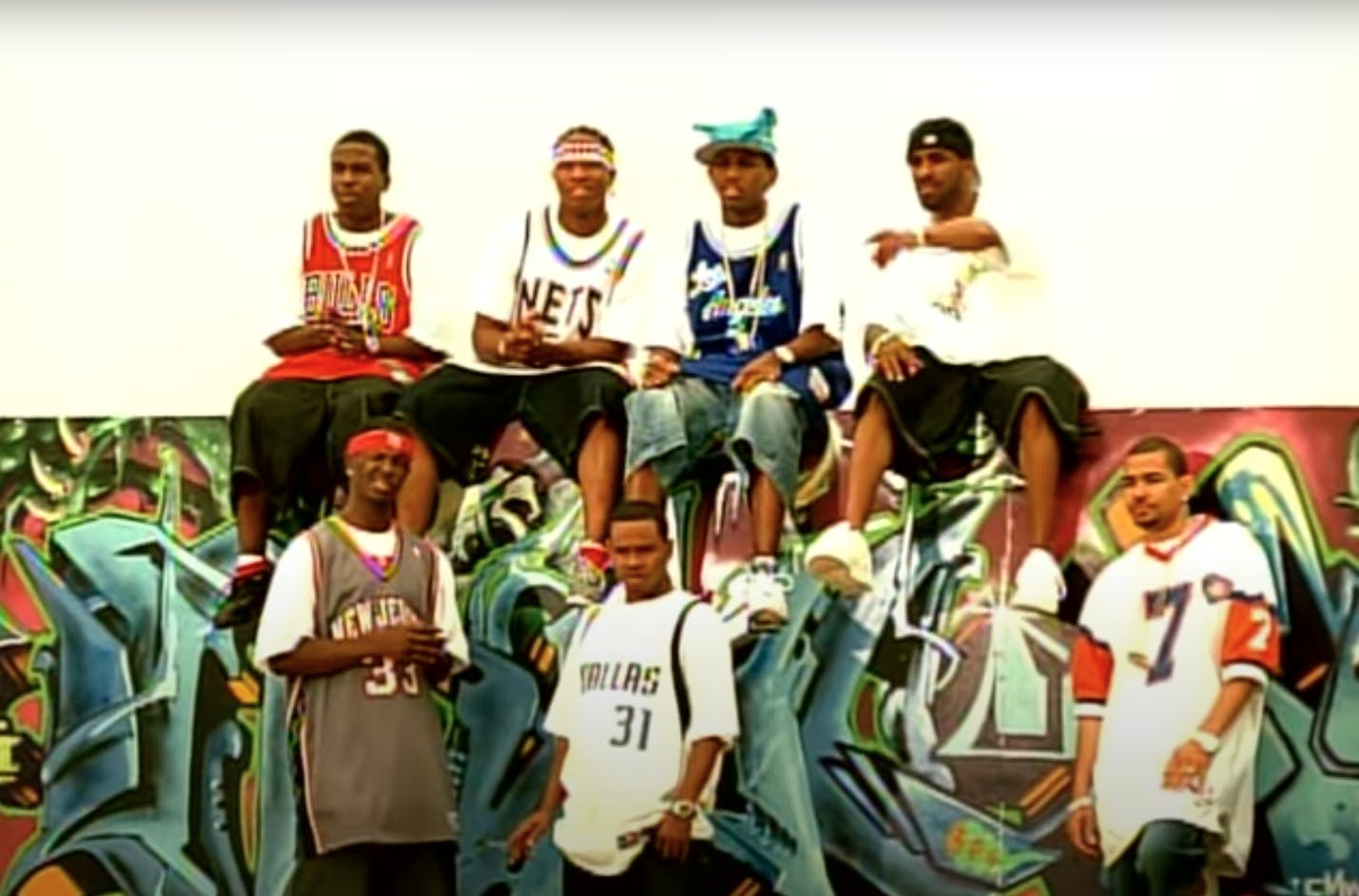

Mitchell & Ness throwback jerseys
Mitchell & Ness throwback jerseys have been a staple in Hip-Hop culture since the early 2000s. They have become popular among rappers, athletes and fans alike, as a way to pay homage to the past and the players who paved the way for the current generation. The association of nostalgia and cultural identity that the brand represents, makes it a desirable fashion statement for Hip-Hop enthusiasts.
In the 2000s, Hip-Hop artists and celebrities began to incorporate throwback jerseys into their fashion choices, making them a popular trend in the culture. Many music videos and performances featured rappers wearing throwback jerseys, further popularizing the trend. For example, Jay-Z and R. Kelly in the music video for "Fiesta (Remix)" both donned throwback jerseys, which helped to solidify the trend.
The popularity of throwback jerseys in Hip-Hop culture can also be attributed to the rise of nostalgia as a trend in fashion. The early 2000s saw a resurgence in vintage and retro fashion, with many designers and brands incorporating elements of the past into their designs. Mitchell & Ness, being one of the leading manufacturers of authentic throwback jerseys, was able to capitalize on this trend.
Furthermore, the rise of Hip-Hop culture in the mainstream media also played a role in the popularity of Mitchell & Ness throwback jerseys. As Hip-Hop became more mainstream and accepted by the general public, the fashion choices of Hip-Hop artists and celebrities were more widely accepted and imitated by fans.
In the 2000s, the Mitchell & Ness throwback jerseys were a symbol of cultural identity, as they represented a connection to the past and a sense of pride in one's team and city. Many Hip-Hop artists would rep their hometown teams with the jerseys, adding another layer of meaning to the trend.
As Nas put it, “"Throwback jerseys are more than just clothing. They're a symbol of nostalgia and a way to connect with our history."
Cam’Ron’s pink mink coat
One of Cam'Ron's most notable fashion statements was his pink mink coat. The coat, which became a pop culture moment in the 2000s, was worn by Cam'Ron in a number of music videos and public appearances. The coat, made by designer Dapper Dan, was made out of real mink fur and featured a bright pink color. It quickly became a symbol of Cam'Ron's unique style and his love for the color pink.
Cam'Ron's love for the color pink is often seen as a form of self-expression and a way to stand out from the crowd. He has stated in an interview that "I just like the color pink. It's different, it's flashy, it's not your average color for a man to be wearing. You know, people be like, 'Yo, why you always wear pink?' And I be like, 'Why not?'" He also said in an interview "I just like the color pink. It's different, it's flashy, it's not your average color for a man to be wearing. You know, people be like, 'Yo, why you always wear pink?' And I be like, 'Why not?'"
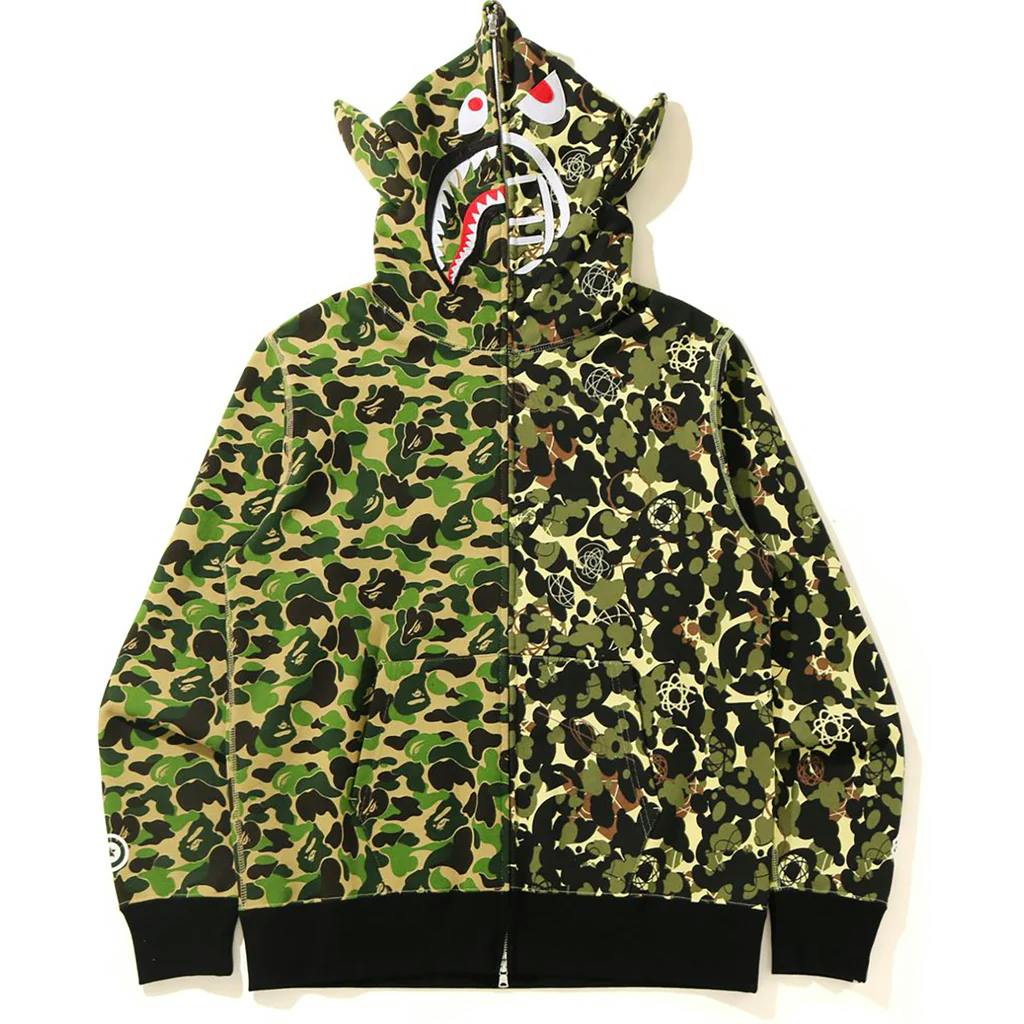

Bape hoodies
BAPE's unique designs, which often featured bold graphics and bright colors, helped to set the brand apart from other streetwear labels. (BAPE) hoodies became extremely popular in the 2000s, particularly among hip hop artists and fashion enthusiasts. The brand, which originated in Japan, was founded by Nigo in 1993 and quickly gained a cult following for its bold designs and high-quality streetwear.
In the early 2000s, BAPE hoodies began to gain mainstream popularity in the United States, particularly in urban areas. This was largely due to the influence of hip hop artists such as Pharrell Williams, who was often seen wearing BAPE clothing in music videos and on stage.
In an interview with Complex magazine, Pharrell said, "I think it's important to know where things come from. BAPE is from Japan, but it's so global. It's like a beautiful mixture of cultures. It's like a beautiful piece of sushi. It's the perfect combination of flavors."
Oversized white t’s
One of the key reasons for the popularity of the oversized white t-shirt in Hip-Hop during the 2000s was its association with artists who saw it as a symbol of resistance against mainstream fashion and a way to assert their identity and connection to the streets.
In an interview with The Fader, JAY-Z said, "The oversized white t-shirt is a symbol of the streets. It represents where we come from and the struggles we've faced. It's a way to show that we're still here and we're still fighting."
Another reason for the popularity of the oversized white t-shirt in Hip-Hop during the 2000s was its versatility. The simple design of the t-shirt, combined with its loose fit, made it easy to pair with a wide variety of other clothing items like baggy jeans and oversized jackets.
In an interview with Complex, Nas said, "The oversized white t-shirt is like a blank canvas. You can dress it up or dress it down. You can make it your own. That's what's so great about it. It's a fashion statement that says something about who you are."


G-Unit tank tops
The G-Unit tank top featured a deep cut on the sides, revealing the wearer's ribcage and stomach, and was often worn by members of the group, including 50 Cent, Lloyd Banks, and Tony Yayo, in music videos and public appearances.
One of the key reasons for the popularity of the G-Unit tank top was its association with the G-Unit group, which was one of the most successful and influential hip-hop acts of the early 2000s. Fans of the group often looked to the group's members for fashion inspiration, and the G-Unit tank top quickly became a symbol of the group's style and attitude.
In an interview with XXL, 50 Cent said, "The G-Unit tank top is part of our identity. It's something that we wear to show that we're a part of the G-Unit movement. It's a symbol of our unity and our strength.”
What Was 2000s Fashion?
Overall, the 2000s were a decade of experimentation and boundary-pushing in hip hop style and fashion across the board. While some trends from '90s hip hop persisted, fresh styles and fashion brands emerged over time.
One of the era's most iconic brands was Sean John, Diddy’s clothing line which was renowned for high-quality streetware items velour tracksuits, leather jackets, and graphic tees. Jay-Z’s Rocawear and other brands like Akademiks (endorsed by Eminem) also rose to prominence.
Other clothing lines like FUBU and Wu-Wear remained popular in the 2000s, catering to fans who wanted to embrace the old-school hip-hop look.
Another massive trend was athletic wear, as Nike and Adidas sneakers became a staple of the hip-hop wardrobe. Air Force Ones were particularly popular, thanks partly to Nelly's 2002 hit song "Air Force Ones." Also common were sweaters, sweatbands, and crop tops, with the likes of Beyoncé and Missy Elliott helping to popularize the latter.
In the early 2000s hip-hop fashion scene, accessories might have been more critical than the clothing itself. Bandanas were worn in various ways, and trucker hats became all the rage, with Von Dutch hats, in particular, being sported by superstars like Ashton Kutcher and Justin Timberlake.
Grillz also took the public by storm. Rappers like Nelly, Paul Wall, and Lil Jon blinded their fans with shiny teeth in music videos and on the red carpet. And, in terms of color and pattern, camo was popular, and brightly colored clothing was also in vogue.
The influence of the 2000s Hip-Hop fashion trends can still be seen today, with many artists like Kanye West and Kendrick Lamar continuing to push boundaries and set new trends in the genre.
